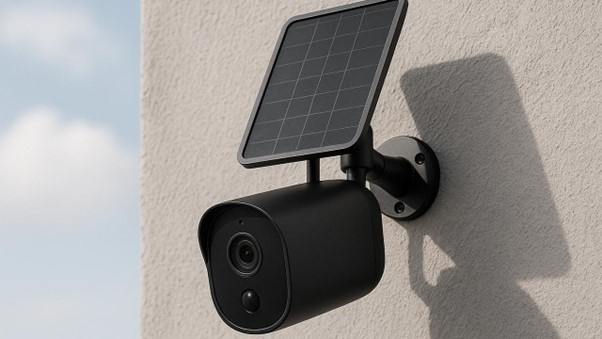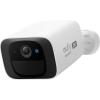Home security cameras have come a long way from grainy footage and clunky DVRs. These days, even an entry-level camera can livestream to your phone, detect movement, and alert you instantly when something’s up. But with so many options out there, it’s easy to get lost in the specs. Here’s what actually matters when choosing one.
Resolution and Image Quality
Clarity is key. A camera with at least 1080p Full HD resolution should be your baseline. Anything less can make it tough to identify faces or licence plates. Higher resolutions like 2K or 4K offer sharper detail, but they’ll also chew through more storage and bandwidth. If you want crisp footage without overloading your Wi-Fi, look for cameras with efficient video compression (like H.265).
Field of View
A wider lens means fewer blind spots. Most home security cameras range between 110° and 160°, which is enough to cover a standard room or front porch. For large areas, a pan-tilt model can rotate and follow motion automatically.
Night Vision
You’ll want clear footage after dark. Infrared night vision is standard, but colour night vision (using low-light sensors or built-in spotlights) gives a more realistic view of what’s happening outside. Check the advertised night vision range — around 8 to 10 metres is good for driveways or gardens.


Smart Detection
Modern cameras do more than just spot motion. Look for AI-powered detection that can tell the difference between a person, a vehicle, or your neighbour’s cat. This helps cut down on false alerts and lets you focus on the events that actually matter.
Storage and Cloud Options
You’ll need somewhere to save the footage. There are two main choices:
- Local storage: MicroSD card or a base station — no ongoing fees, but easier to tamper with if the camera’s stolen.
- Cloud storage: Footage is uploaded securely and accessible anywhere, but often comes with a monthly subscription.
Some brands offer both, which gives you flexibility and a backup plan if your internet drops out.
Connectivity and Smart Home Integration
Make sure the camera works with your existing setup. Wi-Fi is the most common connection type, but wired or PoE options are more reliable for fixed installations. If you already use smart assistants like Alexa or Google Home, check that the camera supports them — it’s handy to view your feed on a smart display or use voice commands.
Power Source
You’ll find three main types:
- Wired cameras: Continuous power, no charging, but require installation.
- Battery-powered: Easier to install, but need recharging every few months.
- Solar-powered: Great for outdoor spots with sun exposure, ideal for long-term use.
If you go wireless, check the expected battery life and whether you can buy spare batteries or a solar add-on.
App Experience
The best camera is only as good as its app. Look for a clean, responsive interface that lets you view live feeds, download clips, and customise notifications easily. Bonus points if it supports multi-camera viewing or works seamlessly across Android and iOS.


Privacy and Security
Security cameras shouldn’t compromise your privacy. Always choose brands that offer end-to-end encryption, two-factor authentication, and clear privacy policies. Avoid unknown brands that don’t mention data protection — your footage is valuable, and so is your personal info.
Price and Value
You don’t have to overspend to get good coverage. Entry-level indoor models start around $50–$100, while outdoor and smart-feature cameras usually range from $150–$300. It’s often better to invest in a few high-quality units than fill your home with budget ones that don’t perform well when it counts.
Final Thoughts
Choosing a home security camera isn’t about chasing every feature — it’s about finding the right balance of image quality, reliability, and convenience for your space. Whether you want something discreet for indoors or a weatherproof setup outside, knowing what to look for makes all the difference.







